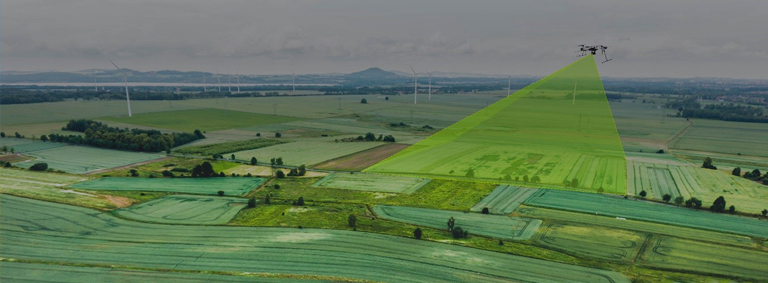India – A Nation of Farmers
About 17-18% of India’s GDP is contributed by the agricultural sector. With 58% of the country’s population dependent on agriculture, it is worrisome that farmers are becoming increasingly discontent with the return on investment (ROI) they receive from farming.
According to NITI Aayog’s paper, annual farm income per cultivator stood at Rs 1,20,193 in 2015-16. Adjusted to inflation, a farmer’s annual income in 1993-94 was Rs 21,110 and in 2015-16, it was Rs 44,027. This represents a doubling of farmers’ income over a period of 26 years. If we are to grow as an economic powerhouse, it is imperative that we reduce this time period drastically.
The Need for Precision Agriculture
With technologies and techniques now available to cater to individual standing crop in order to maximize yields, it is increasingly becoming possible to earn more from the same piece of land than it was ever before. Precision agriculture is one such farming management concept which is based upon measuring and responding to inter- and intra-field variability in crops.
It relies upon specialized equipment to collect real-time data on the conditions of crops, soil and ambient air, along with other relevant information such as hyper-local weather predictions, labour costs and equipment availability. This data is processed to provide farmers with valuable insights on crop rotation, optimal planting times, harvesting times and soil management.
While on-field sensors can measure soil moisture and temperature, satellites and drones can capture imagery that can be processed with the data from sensors to provide precise guidance on optimum application of water, fertilizers and especially, pesticides. This can help the farmer avoid wasting resources and prevent run-off reducing environmental impact.
The benefits of precision agriculture are huge – it can reduce input costs by 18-20% and enhance yield by 30-100%. According to a drone manufacturing company specializing in agriculture, drones resulted in a 10% average increase in crop yield for the Ocealia Group. In another case study undertaken by Timiryazev State Agrarian University (Moscow), drones acquired Normalized Difference Vegetation Index (NDVI) maps for crop health which helped prepare fertilizer application map. Drones together with GPS-enabled tractors used the maps to distribute appropriate amount of fertilizer in each crop zone leading to 20% reduced fertilizer use and 13-14% increased protein in harvest. A 20% fertilizer saving is enormous as fertilizers constitute a major portion in the input costs of a farm.
Taking Precision Agriculture to Indian Farmer
Although it is presumed that drones are expensive, this couldn’t be further from the truth. Taking into consideration a conservative estimate of 10% increase in yield and savings on cost of resources such as labour, fertilizer and pesticides, the benefits derived from drones can be substantial. However, even though they create great value, they still need to be carried to markets in a manner that a low-income farmer can afford. Even though India is still in its nascent stage in the use of agricultural drones, companies are coming together to leverage their expertise and benefits of drones to deliver value to farmers.
According to a report by MarketsandMarkets, the agriculture drone market is expected to grow from USD 1.2 billion in 2019 to USD 4.8 billion by 2024 at a CAGR of 31.4%. While India is still in the early stages of this drone-enabled precision agriculture revolution, the Indian start-up ecosystem is already buzzing with the influx of several agri-focussed organizations.
Claro Energy offers solar-powered water pumping solutions to meet irrigation and drinking water needs in off-grid rural areas in over 14 states in India. With a prestigious client base that includes BigBasket, Big Bazaar, Reliance Fresh and many more, Lawrencedale Agro is India’s premier fresh produce supply chain company that seeks better margins for farmers by bypassing intermediaries.
S4S Technologies is a food preservation company that invents new food processing machines to help farmers produce high quality processed food. The company works with over 2,700 farmers and farmer cooperatives directly under its solar powered dehydration initiative supported by USAID, UKAID, the Gates Foundation and the Government of India.
With start-ups, established players and the government coming together, it is safe to say that doubling farmers’ income in a short span of time is no longer a pipedream.
(The author is Co-Chair, FICCI Committee on Drones, and Co-Founder & CEO, IdeaForge Technology Pvt Ltd)





